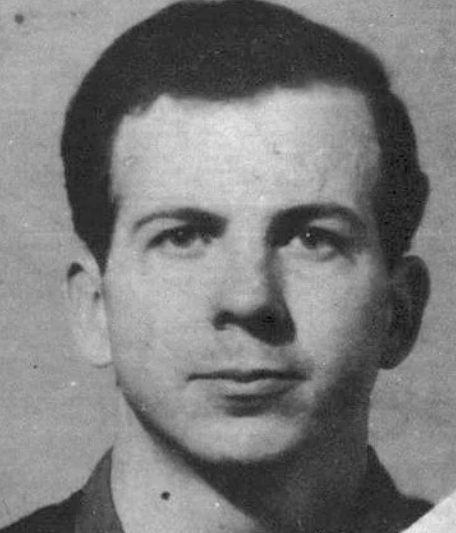Unraveling Lee Harvey Oswald: A Comprehensive Look Beyond the Assassination
Lee Harvey Oswald is a name forever linked to the tragic assassination of President John F. Kennedy on November 22, 1963. Yet, delving into Oswald’s life reveals a multifaceted narrative that extends far beyond this infamous event.1
Table of Contents
Oswald’s Turbulent Childhood and Upbringing
Oswald’s early life was far from ordinary. Raised in a tumultuous environment, his upbringing played a pivotal role in shaping the man he would become. Unraveling the layers of his troubled childhood provides insight into the complexities that drove his actions later in life.
A Mysterious Defection to the Soviet Union
One of the most intriguing aspects of Oswald’s life was his enigmatic defection to the Soviet Union. This unexpected turn of events adds a layer of mystery to his persona.
The Complex Tapestry of Oswald’s Life Events
Oswald’s journey was marked by a series of events that, when woven together, create a complex tapestry. From his troubled upbringing to the mysterious defection, each chapter in his life contributed to the larger narrative that ultimately culminated in one of the most shocking moments in American history.2
Unveiling the Intricacies Leading to History’s Turning Point
To truly understand the significance of Lee Harvey Oswald, one must delve into the intricacies of his life story. It is within these details that the motives, influences, and factors that led to the tragic assassination of President Kennedy come to light.
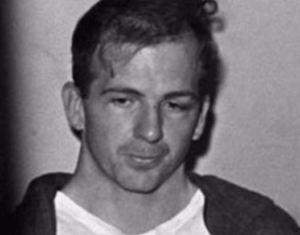
While Oswald is forever associated with the assassination, understanding the nuances of the act itself is crucial. What motivations and circumstances led him to take such drastic measures? Examining this pivotal moment sheds light on the broader context of Oswald’s actions.
The repercussions of Oswald’s actions reverberated through American history. Exploring how this event shaped the nation provides a deeper understanding of the impact Oswald had beyond the immediate tragedy.
Also Read: Where Is Christopher Wray Now? Missing News, Bio, Career and More
Unveiling the Enigma: Marina Oswald Porter’s Post-Assassination Odyssey
In the aftermath of the heart-wrenching tragedy that was President Kennedy’s assassination, Marina Oswald Porter, the wife of Lee Harvey Oswald, emerged as a central figure in a national saga.
Marina’s Roots: From Soviet Union to the United States
Marina Nikolayevna Prusakova, born in the Soviet Union, embarked on a remarkable journey intertwined with the life of Lee Harvey Oswald. Their union took shape during Oswald’s temporary defection to the Soviet Union, and Marina subsequently migrated to the United States alongside him.
Testimony and Remarriage: Marina’s Post-Oswald Chapter
Following the chilling murder of Lee Harvey Oswald, Marina faced the daunting task of testifying against her late husband for the Warren Commission. Despite the tumult that surrounded her during these tragic events, Marina made the courageous choice to move forward. Eventually, she remarried, marking a new chapter in her life.
Embracing Citizenship: Marina’s Journey to Naturalization
In 1989, Marina Oswald Porter achieved a significant milestone by becoming a naturalized citizen of the United States. This pivotal moment signified her commitment to embracing a new identity and life in the country that had witnessed the unfolding drama of the Kennedy assassination.
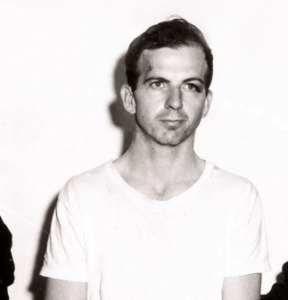
In the present day, Marina resides in Rockwall, Texas, alongside her current husband. Despite the historical significance and media attention linked to her first marriage, Marina has deliberately chosen to lead a private life, shying away from the public eye.
Marina Oswald Porter’s life has taken unexpected turns, navigating the turbulent waters of history, tragedy, and personal choices. Her resilience shines through as she builds a life beyond the shadows of the Kennedy assassination, firmly rooted in her adopted home of Rockwall, Texas.
Unraveling the Lives of Lee Harvey Oswald’s Children
The saga of Lee Harvey Oswald’s progeny, June Lee Oswald and Audrey Marina Rachel Oswald, unfolds as a captivating tale of resilience and anonymity.

Lee Harvey Oswald, the central figure in one of the most infamous events in American history, left behind a legacy that extended to his two daughters, June Lee and Audrey Marina Rachel.
The Veil of Privacy: June Lee Oswald
June Lee Oswald, the elder of the Oswald sisters, has meticulously shielded her life from the prying eyes of the public. Her deliberate choice to remain away from the limelight adds an intriguing layer to the Oswald family narrative.
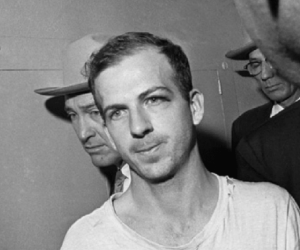
Audrey Marina Rachel: Tragedy Strikes Early
Audrey Marina Rachel Oswald’s life took an unforeseen turn when, at a mere 33 days old, her father, Lee Harvey Oswald, became embroiled in the shocking events that culminated in the assassination of President John F. Kennedy.
Navigating the Aftermath
The aftermath of Lee Harvey Oswald’s heinous act presented unique challenges for his daughters. Growing up in the shadow of their father’s notorious legacy, June Lee and Audrey Marina Rachel Oswald had to grapple with the complexities of their family history.
Despite the notoriety surrounding their father, June Lee Oswald and Audrey Marina Rachel Oswald managed to carve out lives away from the glaring spotlight. Their deliberate efforts to lead private lives add a layer of poignancy to the overarching narrative of the Oswald family.
Delving into the trajectories of Lee Harvey Oswald’s children provides a profound understanding of the human side of a family thrust into the spotlight by tragic circumstances. Their resilience in crafting lives beyond the shadows of their father’s actions speaks to the indomitable spirit of the human experience.
The lives of June Lee Oswald and Audrey Marina Rachel Oswald serve as a testament to the enduring strength of the human spirit in the face of adversity. Beyond the headlines and historical accounts, their journey unravels the intricate threads of a family grappling with the repercussions of a dark chapter in American history.
Also Read: Where Is Sarah Reid Heading After Exiting Global News? New Job And Salary Explored
Unraveling the JFK Assassination: Lee Harvey Oswald’s Controversial Legacy
Delving into the enigmatic life of Lee Harvey Oswald, the accused assassin of U.S. President John F. Kennedy, opens a door to one of the most debated moments in American history. Born on October 18, 1939, in New Orleans, Louisiana, Oswald’s life took a dark turn on November 22, 1963, when he allegedly shot President Kennedy in Dallas, Texas.
The Tragic Event in Dallas
Lee Harvey Oswald, a figure shrouded in mystery, found himself at the center of a national tragedy on that fateful day in Dallas. Accused of assassinating President Kennedy, Oswald’s life came to an abrupt end just two days later on November 24, 1963, when he was fatally shot by Jack Ruby in the Dallas County Jail.
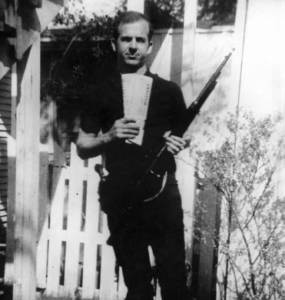
The Warren Commission’s Investigation
- In the aftermath of Kennedy’s assassination, the U.S. government established the President’s Commission on the Assassination of President John F. Kennedy, commonly known as the Warren Commission. Chaired by Chief Justice Earl Warren, the commission conducted a thorough investigation from November 29, 1963, to September 24, 1964.
- The Warren Commission’s conclusion was clear: Lee Harvey Oswald acted alone in firing the shots that killed President Kennedy. Despite persistent conspiracy theories, the commission found no credible evidence linking Oswald or Jack Ruby to any larger conspiracy.
- Despite the Warren Commission’s findings, doubts and controversies continue to surround the JFK assassination. Some argue that the investigation was incomplete, while others point to inconsistencies in the evidence. The legacy of Lee Harvey Oswald remains a topic of intrigue and speculation.
- In the intricate tapestry of American history, the assassination of President John F. Kennedy stands as a pivotal moment. Lee Harvey Oswald’s role in this tragedy, as examined by the Warren Commission, has left an indelible mark on the nation’s collective memory.
Unleashing Freedom: Oswald’s Journey into the United States Marine Corps
In a pivotal move that shaped his destiny, Oswald took the oath to serve in the United States Marine Corps on October 24, 1956, just one week after celebrating his seventeenth birthday. Notably, due to his tender age, his brother Robert Jr. assumed the role of his legal guardian by signing the necessary paperwork.
The significance of this decision was underscored by Oswald’s deep admiration for his older brother, as evidenced by the proud display of Robert Jr.’s Marine Corps ring on his finger.
The Family Tapestry
Oswald, driven by a strong sense of purpose, meticulously designated beneficiaries upon enlisting. Among them were his mother and his half-brother John, indicating a familial connection that resonated beyond the call of duty.
John Pic, Oswald’s half-brother, provided a revealing testimony to the Warren Commission. He asserted that Oswald’s decision to enlist was not merely a response to a patriotic call but rather a yearning “to break free from the oppressive yoke imposed by my mother.”
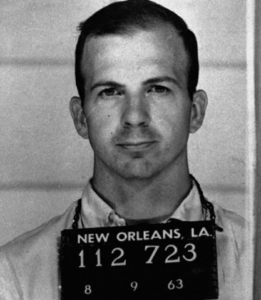
Unveiling Motivations
The testimony presented by John Pic sheds light on Oswald’s motivations, portraying a desire to liberate himself from perceived constraints. His enlistment becomes a symbolic act of breaking free, a courageous step towards emancipation from familial struggles.
The Influence of Brotherly Bonds
Oswald’s idolization of Robert Jr. played a pivotal role in this decision. Wearing his brother’s Marine Corps ring wasn’t just a display of familial pride; it embodied a profound connection and a commitment to uphold the legacy of service that ran deep within the family.
Oswald’s enlistment was more than a mere legal commitment; it was a personal declaration of independence. The Marine Corps became a vehicle through which he sought to shed the weight of perceived oppression, stepping into a realm where his actions and destiny were his own.
FAQ’S
1. Where is Marina Oswald Porter today?
Ans: Marina Oswald Porter, the widow of Lee Harvey Oswald, currently resides in Rockwall, Texas. She has maintained a relatively private life since the events surrounding the assassination of President John F. Kennedy.
2. How many children does Marina Oswald Porter have?
Ans: Marina Oswald Porter has two children. Her daughters are June Lee Oswald and Rachel Oswald Porter. Both have largely stayed out of the public eye.
3. Is Marina Oswald Porter still alive?
Ans: As of the latest available information, Marina Oswald Porter is alive. However, it’s essential to note that personal details such as this may change, and it’s advisable to verify with recent sources for the latest updates.
4. What happened to Marina Oswald Porter after Lee Harvey Oswald’s death?
Ans: After Lee Harvey Oswald’s death, Marina faced significant challenges. She remarried in 1965, becoming Marina Oswald Porter, and has since kept a low profile. She has occasionally spoken about her experiences but has largely avoided the public eye.
5. How has Marina Oswald Porter contributed to historical discussions?
Ans: Marina Oswald Porter has occasionally shared her insights into the life of Lee Harvey Oswald, providing a unique perspective on historical events. Her interviews and statements have contributed to the ongoing discussions and debates surrounding the assassination of President John F. Kennedy.
Read More: Cade Wolfe (US Service Member) Obituary Death News
